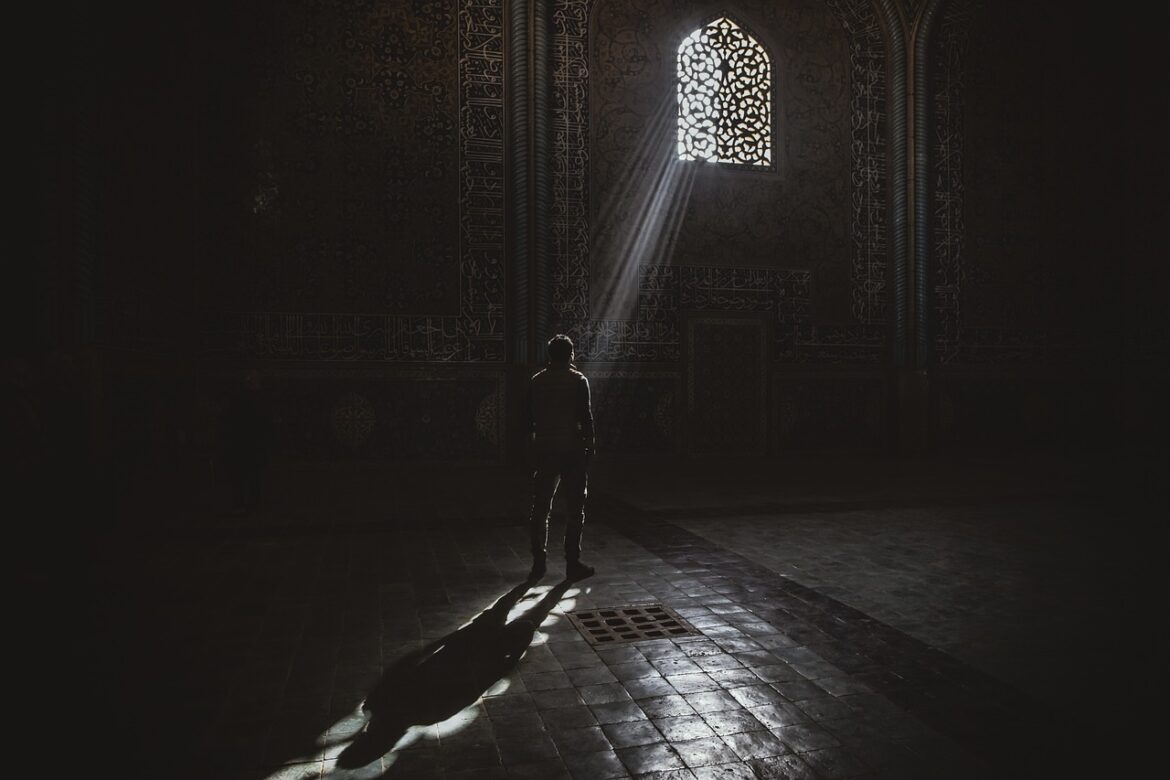Jordan Economic Modernization Vision
The Jordan Economic Modernization Vision is guided by a resounding call for “A Better Future.” Rooted in two fundamental pillars, this vision propels the nation towards transformative growth. The first pillar, focused on accelerated economic expansion, seeks to tap into Jordan’s full economic potential, fostering leaps in growth and ushering in new job prospects over the next decade. This, accompanied by a steady increase in citizens’ per capita income, forms the core of these efforts. The second pillar, equally vital, is dedicated to improving the quality of life for all Jordanians, positioning the nation as a regional leader in this aspect. Sustainability serves as a cornerstone woven throughout both pillars, underscoring Jordan’s commitment to lasting progress.
This visionary journey is marked by a set of strategic goals that define its path. The aspiration to integrate over a million young individuals into the labor market demonstrates inclusivity. The pursuit of economic prosperity is evident in the goal of achieving an average annual increase of 3% in income per capita. Elevating Jordan’s global competitiveness is mirrored in its aspiration to ascend to the top 30 percentile in the Global Competitiveness Index and the Legatum Prosperity Index. Furthermore, the vision aims to double the percentage of contented Jordanians, reaching an impressive 80% satisfaction rate with their quality of life. Casting its influence globally, the Vision envisions one Jordanian city securing a place among the world’s top 100 cities, highlighting the nation’s global impact. This commitment to progress extends sustainability, with goals set to improve Jordan’s standing in the Global Environmental Performance Index and the Global Sustainability Competitiveness Index to the top 20 and 40 percentile respectively.
In essence, the Jordan Economic Modernization Vision is a holistic and aspirational framework that converges economic dynamism, improved living standards, and a steadfast dedication to sustainability. As it steers Jordan towards a promising tomorrow, this vision encapsulates the nation’s unwavering resolve to nurture its people, empower its economy, and secure a place of prominence on the global stage. After a decade, what does the realization of the Jordan Economic Modernization Vision’s goals and objectives look like in terms of success and progress?
As a maker:
In the realm of aspirations, from a creator’s standpoint, the vision involves the ability to craft a diverse array of goods directly within the space environment, all poised for seamless exportability. This pursuit is underpinned by an earnest desire for export processes that are marked by supportive and motivational parameters, fostering an environment conducive to growth and expansion. Alongside this maker’s voyage is the aspiration to garner acknowledgment at a personal and individual level, thereby initiating a chain reaction where creators embrace their intrinsic significance and pivotal role in shaping the world. This outlook encapsulates an inspiring journey driven by ingenuity, ambition, and the yearning for both personal fulfillment and broader recognition.
In terms of youth and civil society organizations:
Within the context of youth and civil society organizations, the focus lies on creating cohesive networks that unite diverse actors and stakeholders. These networks are envisioned to be structured around a distinct value chain, one that places dominant emphasis on social impact and the overall well-being of society. This clarity in purpose seeks to drive these networks towards meaningful and tangible outcomes. For the youth, a significant aspiration is to ensure that even those still pursuing their education possess autonomous access to vital information and a platform to actively engage in dialogues with decision-makers. Simultaneously, the civil society sphere seeks the establishment of more comprehensive and clear networks that serve as unifying threads for all involved parties. This outlook captures a collective effort to foster open communication, inclusivity, and purpose-driven action, ultimately contributing to a more informed, empowered, and interconnected society.
At the Ministry of Culture level:
Within the view of the Ministry of Culture, a strategic approach has been taken involving consultative sessions with a diverse array of cultural and creative practitioners who have crafted significant cultural offerings. The focal point here is the dual recognition—both self-recognition and societal acknowledgment—of these cultural and creative contributors, which stands as a pivotal factor in this endeavor. Addressing the fiscal aspect, there’s a call for the reconsideration of taxes imposed on handmade products. This revision is imperative to strengthen the support provided to creators and enable them to reap profits from their efforts, while ensuring fair pricing. The pricing aspect emerges as a significant challenge, with some handmade products often carrying prohibitive price tags, impeding their marketability. The intent here is to strike a balance where local handmade creations are reasonably priced, enhancing accessibility for buyers without compromising on quality.
Central to the Ministry’s efforts is the committed support for local handmade products and their creators. This spans across faces like reducing the costs of raw materials, facilitating smoother import and export processes, and instituting measures that bolster local artisans’ ability to turn a profit. This multifaceted approach serves the dual purpose of making these creations affordable for consumers while safeguarding their high quality. Moreover, this approach is pivotal in counteracting the impact of lower-priced imported handicrafts from elsewhere, particularly China, which could otherwise undermine the locally crafted products. Furthermore, there’s a distinct emphasis on empowering women engaged in the scope of handmade cultural and creative products, aiming to provide them with a platform for growth and recognition. This comprehensive approach underscores the Ministry’s commitment to fostering a thriving ecosystem for cultural and creative contributions, amplifying their impact and resonance within society.
NFT
The advent of NFTs (Non-Fungible Tokens) has ushered in a transformative era where women are now spearheading comprehensive businesses through the convenience of their mobile phones, capitalizing on technological progress. To harness the full potential of this digital evolution, there’s a pressing need for education and regulatory frameworks that align with these technological strides. The paradigm has shifted, rendering physical presence unnecessary, as the entirety of transactions and operations can seamlessly unfold in the online realm. This shift underscores the imperative for a forward-looking approach that equips women entrepreneurs with the tools, knowledge, and supportive structures they require to thrive in this dynamic digital landscape.
Art related to a number of creative and cultural sector
The sphere of creative and cultural sectors is thriving, encompassing various artistic disciplines. Particularly, within the film-making industry, a positive shift is occurring as social encouragement, coupled with parental support, is driving education in this field. This wave of encouragement extends across educational tiers, spanning from elementary to higher education levels, fostering an environment where studying art and film-making gains momentum between the ages of 13 and 16. Jordan, distinguished by its 10 Oscars, stands out as a regional filmmaking nucleus. In tandem with this cinematic revival, the concept of urban design comes to the fore, with a focus on capitalizing on Jordan’s distinctive landscape and heritage. This vision entails crafting cityscapes that seamlessly weave together modernity with the legacy of the past. This holistic approach promises to create a unique urban environment that echoes Jordan’s rich history while embracing innovation, underlining the nation’s aspiration to thrive at the crossroads of artistic expression, cinematic excellence, and urban ingenuity.
Theater
Theater in Jordan is envisioned to become a vibrant part of the cultural landscape, with the aspiration of hosting theater performances and events across the nation every weekend. This ambition brings with it a comprehensive value chain in theatrical production, complete with a union or database that unites professionals working in various artistic aspects such as writing, lighting, set design, costumes, and more. The establishment of such a network forms the backbone of the artistic institutions needed to foster a thriving theater community. On the educational front, the integration of the arts into the curricula of basic elementary schools is envisioned as a fundamental step, ensuring that creativity remains accessible and intrinsic from an early age. In tandem with this, a key goal is to continually nurture and sustain cultural and creative products and events, fostering a space where artistic expressions flourish.
Moreover, the transformative power of creative industries is recognized, positioning them as catalysts for positive social change and development. A case in point is the screening in Shatana, which highlighted a remote village, underscoring the impact of creative endeavors. Central to this vision is the democratization of culture, ensuring that art and culture are not confined to elite circles but are accessible to all citizens. This holistic approach is directed at making culture a universal entity, not a luxury reserved for a few. This inclusivity extends to the educational sphere, where curricula emphasize the value of authentic heritage and recognize significant contributors to art, creativity, and culture.
Collaboration with universities is integral to expanding this reach, extending creative and cultural efforts beyond Amman into villages and other governorates. The recognition of individuals who make substantial contributions to culture, art, and creativity is also highlighted, celebrating their achievements. Recognizing the economic facet, the purchasing power among citizens, particularly the unemployed youth who constitute around 40%, is a critical consideration. This highlights the interplay between cultural development and economic empowerment. Addressing a specific challenge, the absence of locally made souvenirs is acknowledged, with imported products overshadowing authentic local handcrafts. This issue prompts a call to rectify this and foster a strong market for locally made souvenirs, resonating with tourists and authentically representing Jordan’s heritage.
Expectations and Needs
The principal aspiration is to attain both national and global recognition, leveraging the potential of technological advancements as a driving force. Central to this ambition is a dedicated focus on cultivating educational avenues for younger generations, laying the foundation for sustainable growth. The vision extends to forging global connections, fostering a sense of interconnectedness across boundaries. Financial support is crucial to breathe life into these endeavors, while concurrently raising awareness about their significance. Garnering backing from local authorities and regulators is pivotal, ensuring that the creative and cultural industries (CCI) are fortified and empowered to thrive.
Creating awareness about the value of CCI begins at the educational level, encompassing schools and targeting parents as well. This drive seeks to debunk stereotypes and reshape the image around the realm of television commercials (TVCs), promoting a fresh perspective. In the sphere of governance, a preference for clear and accessible regulations over rigid laws emerges, emphasizing the need for guidelines that are comprehensible and adaptable. Moreover, aligning with technological advancements is integral to remain relevant and agile.
Commencing with education, the call extends to institutionalize CCI practices and concepts, while nurturing a local and national mindset that builds upon existing examples. The essence of community—both on national and local scales—forms a bedrock for advocacy and deeper connections. The media, as influential stakeholders, are positioned to play a vital role in supporting the CCI, offering critical analysis, intellectual insight, and substantive data-based information. Key pillars in this journey include public engagement, the importance of impact measurement, networking, awareness raising, and fostering advocacy engagement. This comprehensive approach is underscored by the need for a cultural agenda, serving as a unifying tool that brings together stakeholders, efforts, and initiatives under a cohesive framework. This multifaceted vision encapsulates the drive to propel creative and cultural industries forward while illuminating their potential and positive impact on societies.
Suha Ayyash



